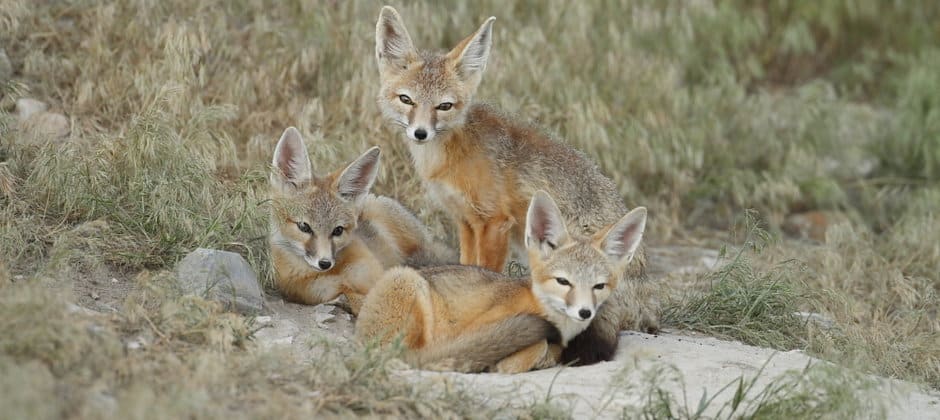Share this article
Fleas drive kit foxes to bounce from den to den
Large numbers of fleas irritate kit foxes enough to drive them from den to den.
The discovery could help researchers understand how the insects — which are projected to increase with climate change — might affect kit foxes (Vulpes macrotis).
More than 50 years ago, biologist Harold Egoscue had noticed that kit foxes in the Great Basin Desert used multiple dens.
“He thought they were probably using multiple burrows as a way to mitigate that flea burden,” said Bryan Kluever, a supervisory research biologist with the U.S. Department of Agriculture’s Wildlife Services program and the lead author of a study published in Ecosphere.

Researchers count fleas on a captured kit fox. ©Bryan Kluever
A half-century later, from March 2010 to November 2013, Kluever and colleagues were conducting mark and recapture work with kit foxes as part of a larger population and land use assessment when they noticed the enormous numbers of fleas the canids carried. He presented his research at the 2019 Joint Annual Conference of the American Fisheries Society and The Wildlife Society in October.
Kluever decided to put Egoscue’s hypothesis to the test. They captured 84 kit foxes and counted the flea loads they carried. In one animal, they counted more than 200 fleas.
“There’s nothing quite like having fleas jump into your nose,” he said. “It gives you an appreciation of what these animals have to go through.”
They treated a subset of the foxes with an over-the-counter medication used to eliminate fleas on domestic dogs or cats and left some of the others alone.

The flea species Pulex irritans is most encountered on kit foxes in the Great Basin. ©Helen Pigage
They also monitored 217 seasonal dens for the presence of kit foxes. Fleas spend more of their lives off of animals than on them, and their early stages of life as pupae and larvae are spent somewhere nearby, like in fox dens.
“Fleas can survive for some time in these burrows,” Kluever said.

One kit fox (not pictured) was found with more than 200 fleas. ©Jerry Sintz
When they randomly recaptured some of the marked animals that had received de-flea treatment, they determined that the process worked to keep away the insects for about 70 to 90 days.
Combining this information with observations of den use, they found that the kit foxes with more fleas switched dens more often and spent less time at any given den on average.
“If you didn’t get a flea treatment, you were more likely to switch dens from one week to the next,” Kluever said at the conference.
They found the foxes without treatment reduced unique den use by 15% to 20%. While the researchers still aren’t sure whether this was a game changer for the species, Kluever said it’s a factor that should be studied more in the future.
“With a lot of land use changes and climate change, I think the influence of ectoparasites is something that’s going to warrant more attention for some species,” he said.
Header Image: Kit foxes have high flea counts in the Great Basin Desert. ©Jerry Sintz








